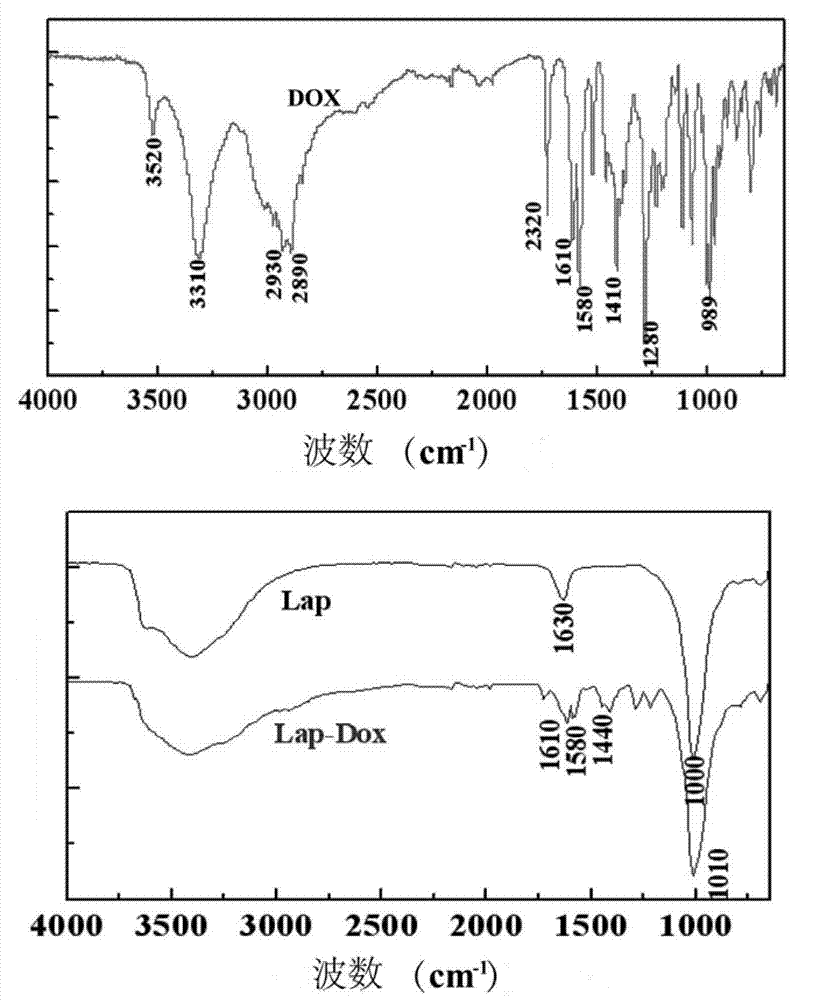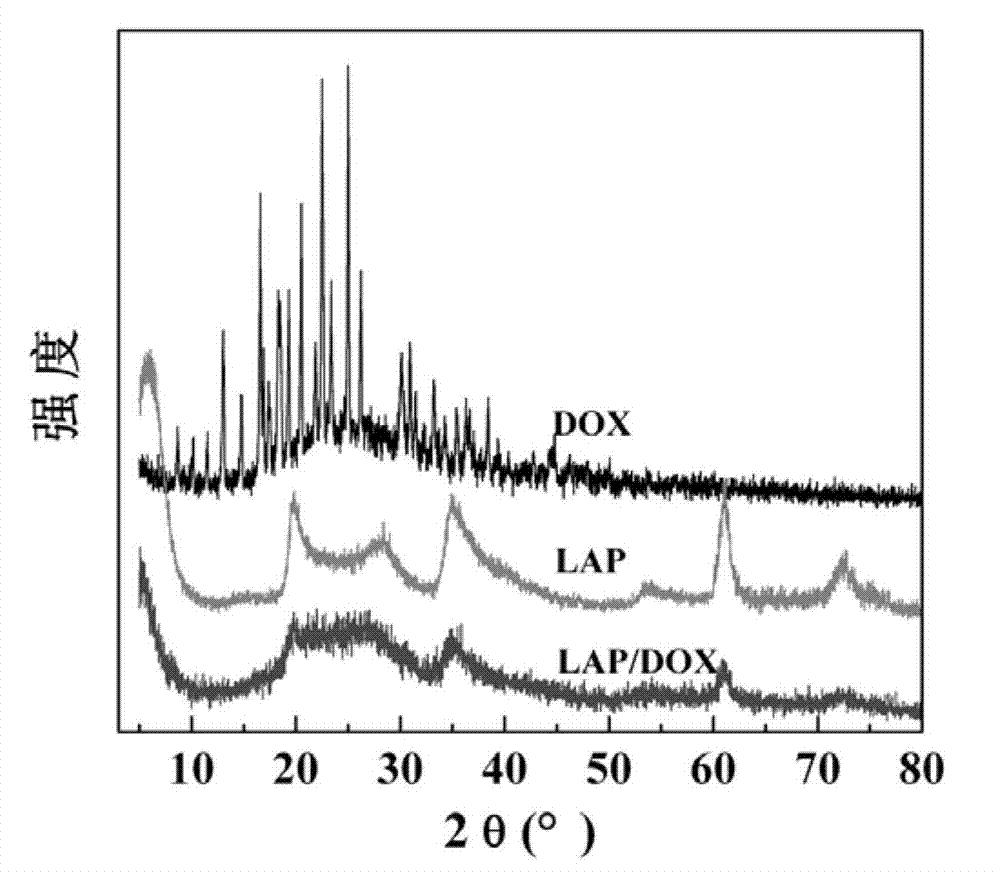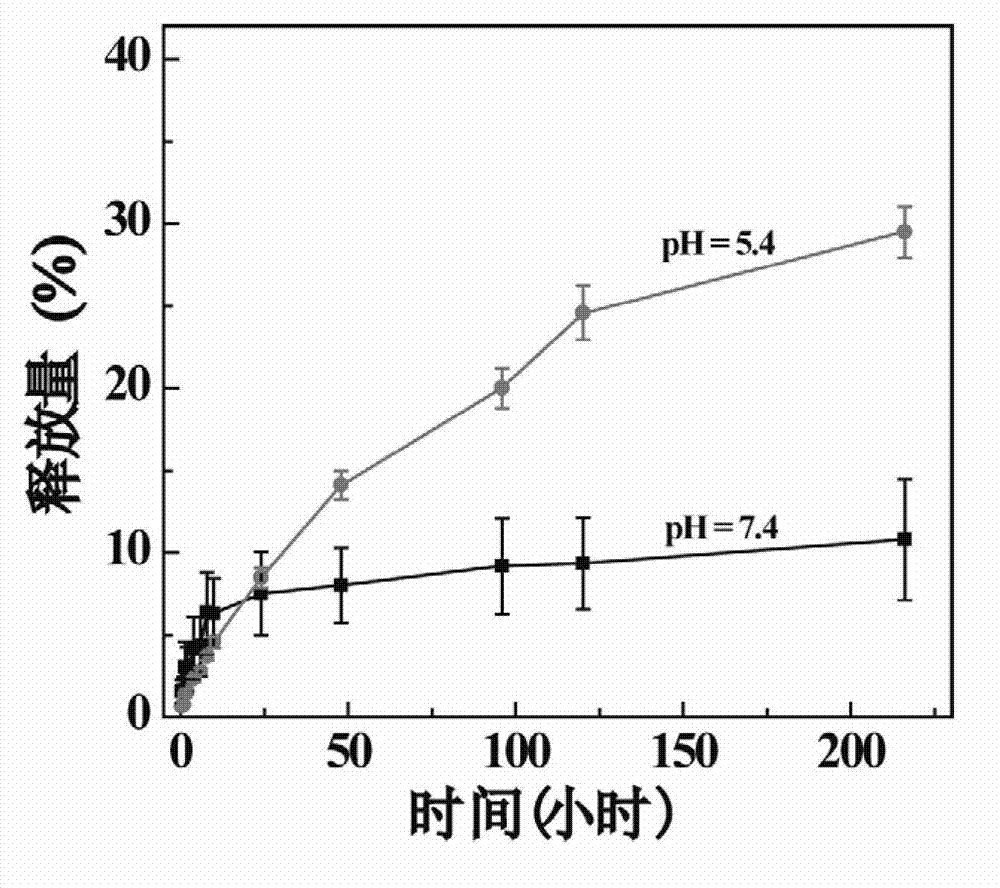Method for loading doxorubicine (DOX) anti-cancer medicine by laponite (LAP) clay nanoparticles
A technology of doxorubicin hydrochloride and clay nanoparticles, which is applied in antineoplastic drugs, drug combinations, and pharmaceutical formulations, etc.
- Summary
- Abstract
- Description
- Claims
- Application Information
AI Technical Summary
Problems solved by technology
Method used
Image
Examples
Embodiment 1
[0055] 5mL of LAP ultrapure aqueous solution with mass concentrations of 6mg / mL and 2mg / mL were mixed with DOX ultrapure aqueous solution in equal volume, and the reaction was performed under magnetic stirring at room temperature for 24h. After the reaction, the suspension obtained by the reaction was centrifuged (8000 rpm, 5 min), washed (washed twice with distilled water), and separated and precipitated to obtain LAP-DOX nanoparticles. Use Lambda25 UV-Vis spectrophotometer to measure the absorbance of supernatant and washing solution mixture at 480nm, calculate the concentration of unwrapped DOX according to the standard curve, and then obtain the loading amount of LAP to DOX at this time, which is 98.3±0.77% .
[0056] in the attached figure 1 In the FTIR spectrum of LAP / DOX shown, 1610 cm -1 and 1580cm -1 N-H bending vibration peaks can be detected at 1410 cm -1 The C=O stretching vibration peaks at , these are the characteristic vibration peaks of DOX, which proves th...
Embodiment 2
[0058] 5mL of LAP ultrapure aqueous solution with mass concentrations of 2mg / mL and 2mg / mL were mixed with DOX ultrapure aqueous solution in equal volume, and the reaction was performed under magnetic stirring at room temperature for 24h, and the reaction was completed. The suspension obtained by the reaction was centrifuged (8000 rpm, 5 min), washed (washed twice with distilled water), and separated and precipitated to obtain LAP-DOX nanoparticles. Use a Lambda25 UV-Vis spectrophotometer to measure the absorbance of the supernatant and the washing solution mixture at 480 nm, calculate the remaining DOX concentration in the supernatant according to the standard curve, and then obtain the loading amount of LAP to DOX at this time, which is 72.4 ±0.89%. The characterization results of FTIR and XRD further prove that LAP can successfully realize the loading of DOX.
Embodiment 3
[0060] Dissolve LAP / DOX with pH=7.4 and pH=5.4 buffers respectively into a solution with a concentration of 1 mg / mL (the concentration of LAP / DOX), take 1 mL and put it in a dialysis bag to fix it, and place it in a container containing 9 mL of the corresponding buffer. in a shaker at 37°C. Samples were taken every 2h in the first 12h, and every 24h thereafter. Take 1 mL of the liquid outside the dialysis bag for each sampling, measure its absorbance value at 480 nm, and then add 1 mL of the corresponding buffer solution to the outside of the dialysis bag. The in vitro release profiles of LAP / DOX clay nanoparticles were obtained using this method, as shown in the appendix. image 3 shown. Depend on image 3 It can be clearly seen that the release rate of LAP / DOX in the pH=5.4 environment is higher than that in the neutral environment with pH=7.4, and the cumulative release rate increases almost linearly with the increase of time. In general, the microenvironment of healthy...
PUM
 Login to View More
Login to View More Abstract
Description
Claims
Application Information
 Login to View More
Login to View More - R&D
- Intellectual Property
- Life Sciences
- Materials
- Tech Scout
- Unparalleled Data Quality
- Higher Quality Content
- 60% Fewer Hallucinations
Browse by: Latest US Patents, China's latest patents, Technical Efficacy Thesaurus, Application Domain, Technology Topic, Popular Technical Reports.
© 2025 PatSnap. All rights reserved.Legal|Privacy policy|Modern Slavery Act Transparency Statement|Sitemap|About US| Contact US: help@patsnap.com



